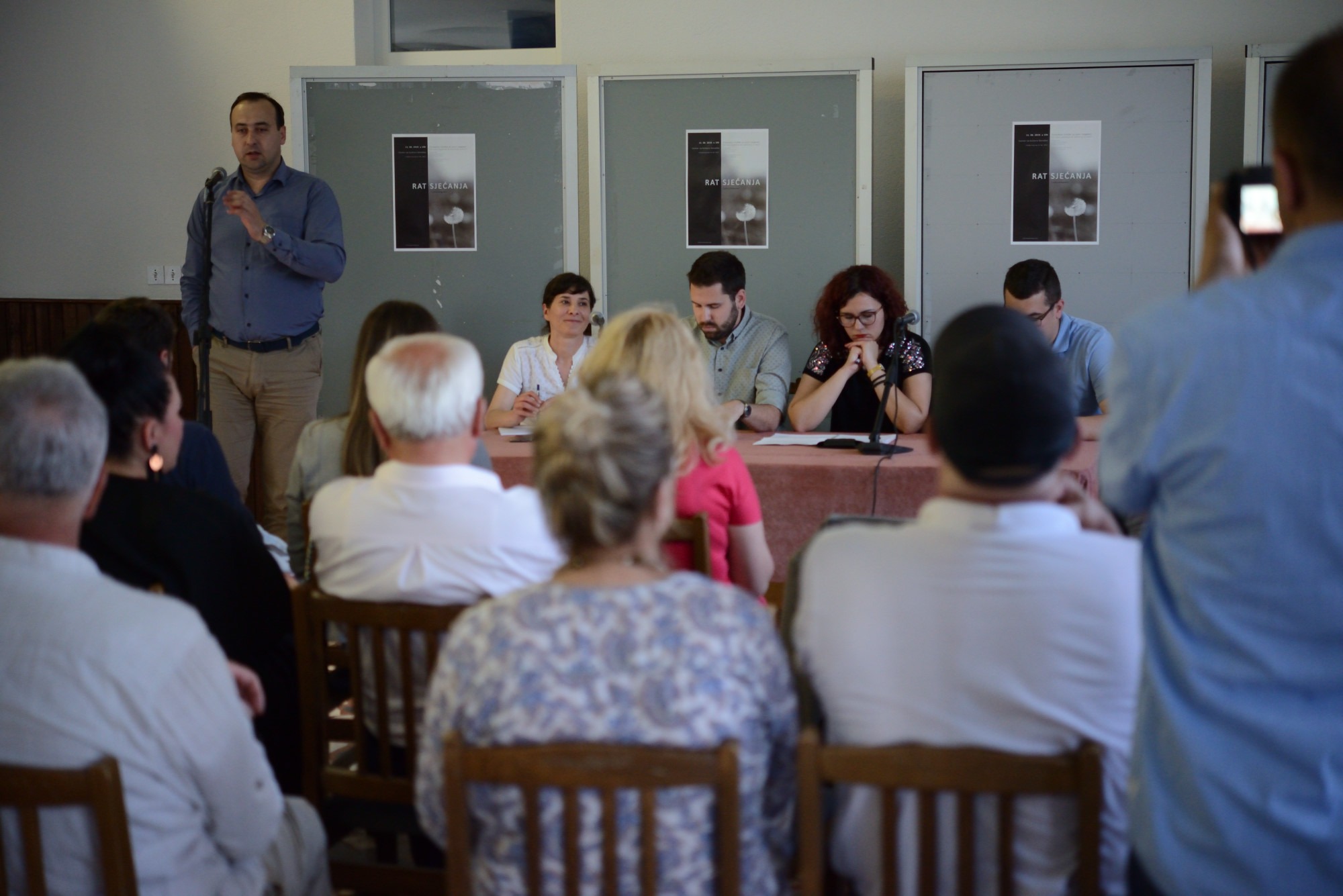After a dozen cities in Bosnia and Herzegovina and Serbia, followed by Podgorica, Skopje and Vienna, the War of Memories exhibition was presented in Goražde. The exhibition in Goražde will remain on display until 23 June 2019.
In cooperation with the Goražde Cultural Centre and local war veterans, our aim in opening the exhibition was to encourage dialogue about how we remember the war, why we remember it, and about our monuments and memorialisation culture in general related to the 1990s war(s) in Bosnia and Herzegovina and the region.

In Goražde, it was also the first time that we organised a public discussion at the opening of the photography exhibition, “From a War of Memories towards Memories of War: How the Postwar Generation Remembers the War”, in order to shed light on how the younger generations born after the war remember it, who are the people that act as creators of these memories and what could be the impact on the future of our society of the current model of memory conveyed to all future generations.
In addition to members of the Centre for Nonviolent Action, Davorka Turk and Nedžad Novalić, the discussion also included Edo Kanlić, a young activist from Goražde, and Mirjana Trifković, an activist and coordinator of the School of Different Memories organised by the Youth Initiative for Human Rights in BiH, through a youth programme focusing on three towns – Foča, Goražde and Višegrad.
Critically assessing the current culture of memory, which is exclusive, focused only on “own” victims while insisting on the exclusivity of our victims and their perpetrators, we also discussed the possibilities for changing this model. Taking as our starting point the interventions into the current model, such as the School of Different Memories and visits by a mixed group of veterans to sites of atrocities on all sides, we tried to identify key stakeholders who could have the power and responsibility to change things.

Key roles in creating memories of the war are played by the family, the education system, memorialisation, the media, religious communities, etc. Although it is clear that we do not all have the same power to act, and thus cannot equally share the responsibility, it is a fact that each individual has the ability to change things, starting from themselves, their family, local community, etc. Although our culture of memory is generally exclusive, in the sense that we exclude ourselves from the memory of others and we exclude others from our memory, we do not dismantle images of the enemy, but rather deepen and extend them, there are, however, some local examples indicating that a different approach is possible. At the opening of the exhibition, we were joined by Rato Rajak, the Mayor of Rudo, who is known for his efforts to participate in commemorating Bosniak victims from Rudo, a place where Bosniaks are a minority today.
“We have really become experts at finding a million reasons why we should be divided, while investing very little effort in finding motives that could bring us closer together and help us find commonalities. This Centre is promoting what we have in common and helping find links that could be important for our common future,” Rajak said at the opening of the exhibition.
We were glad that we were joined in Goražde by figures from its political life, who also have the power and responsibility to forge a different culture of memory. In addition to the Minister of Education, Science and Culture of the Goražde Canton Arman Bešlija and Amira Borovac from the same Ministry, the opening of the exhibition was also attended by Edita Velić, speaker of the Cantonal Assembly, and the Deputy Mayor of Goražde Sanid Zirak.
One of the comments from the audience was that it was a pity that topics such as this one are initiated and moderated in the local community almost exclusively by outsiders, although people from the local community have a need to discuss them. According to comments from the audience in Goražde, current memory is often no more than pre-military training.

The exhibition and public discussion provided an opportunity to speak openly about the pain we feel as individuals and as communities and about what bothers us in stories of the war. It was an opportunity to see that we are often pained by the same things: failure to prosecute those responsible for crimes, the impossibility of marking sites of atrocities where we are in the minority, the glorification and celebration of victories that we and our community see as atrocities, the celebration of figures we consider responsible for our suffering… A discussion along these lines that would also involve the others would pave the way towards change. The main obstacle standing in the way of such dialogue and keeping us in perpetual war (of memories, monuments, commemorations, etc.) is the perception that the other side is nothing but enemies we must defeat. Without downplaying the reality of there being many who negate all suffering and victims among the others, who deny crimes and celebrate criminals, encounters such as this one are an opportunity to remember that not everyone is the same, that there are people who will recognise our victims, honour them, help us mark unmarked sites of atrocities whatever their or our or anyone else’s ethnic background may be.
Media coverage of the exhibition: